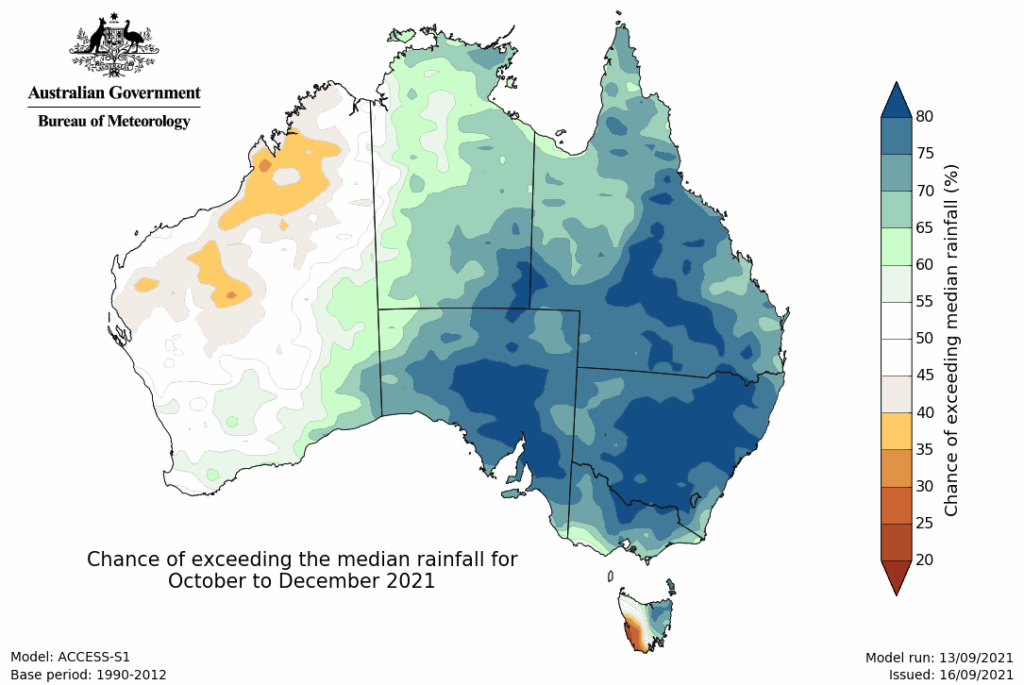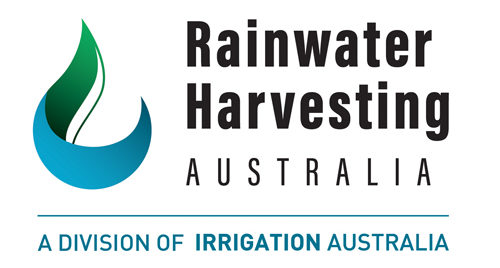
© Bureau of Meteorology
The Bureau of Meteorology is predicting above-average rainfall from October – December for the eastern two-thirds of Australia, with October expected to be the wettest of all three months.
Which means early spring is an ideal time to check your rainwater harvesting system to ensure it is ready for these summer rains.
It is a simple process – just do some key system checks and maintenance steps, and you can have confidence your system will be in great shape.
Regular maintenance will help you maximize the amount of rainwater you collect, improve the water quality, and protect your pumps and appliances.
System Checks
- The Pump – Make sure there is rainwater in your tank, then flush your toilet and check that the pump starts. If you hear it turn on, then everything should be ok. If there is no noise, there might be a problem.
- The Rainwater – Check the colour of the rainwater in your tank. If it is discoloured, it might mean that your pre-filtration devices (leaf diverters and first flush diverters) are not correctly installed, or you don’t have any installed.
- The System – next time it rains, visually check the system to ensure gutters are not overflowing, downpipes are not blocked or leaking, and rainwater is flowing to the tank
System Maintenance Steps
- Empty and clean gutters, first flush diverters and rain heads at the start of each season (quarterly) or when filled with debris.
- Remove, clean and check tank inlet, outlet and overflow strainers at the start of each season or when filled with debris.
- Replace any damaged screens on the entry and outlets of the rainwater tank and downpipes to prevent mosquitoes and wildlife entry
- Clean or replace water pump filters every six months or as directed by manufacturers
- Water filtration maintenance – replace system components as directed by manufacturers
- Charged downpipes should be drained at their lowest point at the end of the wet season and the end of the dry season.
- Do not remove accumulated sediment or sludge from tank bottom unless necessary. This sludge actually performs valuable heavy metal capture and biological treatment train functions and should only be removed if it reaches a depth approaching the tank outlet point.
If you find any problems, consult:
- The product manuals – look online if you don’t have a copy
- The manufacturer of the system or product
- Rainwater Club Australia on Facebook – ask the rainwater community for help https://www.facebook.com/groups/rainwaterclub
One of the benefits of a well-designed rainwater harvesting system is that it requires little maintenance. To check your current system set up, refer to the Rainwater Harvesting Residential Design Specification which is an easy-to-read guide to designing and installing a best practice rainwater harvesting system.
For further Care & Maintenance information, you can also refer to the Rainwater Harvesting Australia fact sheet
